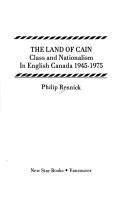| Listing 1 - 5 of 5 |
Sort by
|
Book
Year: 1975 Publisher: Lisboa : Ministério da Comunicação Social,
Abstract | Keywords | Export | Availability | Bookmark
 Loading...
Loading...Choose an application
- Reference Manager
- EndNote
- RefWorks (Direct export to RefWorks)
Portugiesisch. --- Portuguese fiction --- Roman. --- History and criticism. --- Geschichte 1945-1975.
Book
ISBN: 9780271033426 Year: 2009 Publisher: University Park, Pa Pennsylvania State University Press
Abstract | Keywords | Export | Availability | Bookmark
 Loading...
Loading...Choose an application
- Reference Manager
- EndNote
- RefWorks (Direct export to RefWorks)
"Explores an international network of artists, artist groups, and critics linked by their aesthetic and theoretical responses to science, science fiction, and new media. Focuses on the Italian spatial artist, Lucio Fontana and French painter of space, Yves Klein"--Provided by publisher.
Art, European --- Avant-garde (Aesthetics) --- Aesthetics --- Modernism (Art) --- Art, Modern --- History --- Fontana, Lucio, --- Klein, Yves, --- Art --- Fontana, Lucio --- Klein, Yves --- anno 1900-1999 --- Art, European. --- Avant-garde (Aesthetics). --- Avantgarde. --- Kunst. --- 1900-1999. --- Geschichte 1945-1975. --- Europa.

ISBN: 0919888682 0919888674 9780919888678 9780919888685 Year: 1977 Publisher: Vancouver, B.C. : New Star Books,
Abstract | Keywords | Export | Availability | Bookmark
 Loading...
Loading...Choose an application
- Reference Manager
- EndNote
- RefWorks (Direct export to RefWorks)
Nationalism --- Social classes --- Nationalisme --- Classes sociales --- Canada --- United States --- Etats-Unis --- Economic conditions --- History --- Relations --- Conditions économiques --- Histoire --- Afhankelijkheid (algemeen) --- Soziale Klasse. --- Nationalismus. --- Economic history. --- International relations. --- Nationalism. --- Social classes. --- Classes sociales - Canada. --- Nationalisme - Canada. --- Anglokanadier. --- Geschichte 1945-1975 --- Since 1945 --- Geschichte 1945-1975. --- Canada. --- United States. --- Canada - Histoire - 1945 --- -Canada - Relations (générales) - États-Unis. --- Relations (générales) --- 1945 --- -Canada --- Afhankelijkheid (algemeen). --- Since 1945. --- Canada - Histoire - 1945-. --- Canada - Relations (générales) - États-Unis. --- Conditions économiques --- Nationalism - Canada. --- Social classes - Canada. --- Canada - History - 1945 --- -Canada - Economic conditions - 1945 --- -Canada - Relations - United States. --- United States - Relations - Canada.
Book
ISBN: 9780691192529 0691192529 Year: 2019 Publisher: Princeton, N.J. Princeton University Press
Abstract | Keywords | Export | Availability | Bookmark
 Loading...
Loading...Choose an application
- Reference Manager
- EndNote
- RefWorks (Direct export to RefWorks)
How leading American artists reflected on the fate of humanity in the nuclear era through monumental sculpture. In the wake of the atomic bombings of Japan in 1945, artists in the United States began to question what it meant to create a work of art in a world where humanity could be rendered extinct by its own hand. The New Monuments and the End of Man examines how some of the most important artists of postwar America revived the neglected tradition of the sculptural monument as a way to grapple with the cultural and existential anxieties surrounding the threat of nuclear annihilation. Robert Slifkin looks at such iconic works as the industrially evocative welded steel sculptures of David Smith, the austere structures of Donald Judd, and the desolate yet picturesque earthworks of Robert Smithson. Transforming how we understand this crucial moment in American art, he traces the intersections of postwar sculptural practice with cybernetic theory, science-fiction cinema and literature, and the political debates surrounding nuclear warfare. Slifkin identifies previously unrecognized affinities of the sculpture of the 1940s and 1950s with the minimalism and land art of the 1960s and 1970s, and acknowledges the important contributions of postwar artists who have been marginalized until now, such as Raoul Hague, Peter Grippe, and Robert Mallary. Strikingly illustrated throughout, The New Monuments and the End of Man spans the decades from Hiroshima to the Fall of Saigon, when the atomic bomb cast its shadow over American art.
Plastik. --- Geschichte 1945-1975. --- USA. --- Sculpture, American --- Public sculpture, American --- Monuments --- Art and nuclear warfare. --- End of the world --- Monuments. --- Public sculpture, American. --- History --- Art. --- 1900-1999. --- United States. --- Sculpture --- sculpture [visual works] --- nuclear wars --- monuments --- anno 1940-1949 --- anno 1950-1959 --- anno 1960-1969 --- anno 1970-1979 --- United States --- United States of America
Book
ISBN: 1781702861 1847794122 9781781702864 9781847794123 071908363X 9780719083631 1847797881 Year: 2011 Publisher: Manchester Manchester University Press
Abstract | Keywords | Export | Availability | Bookmark
 Loading...
Loading...Choose an application
- Reference Manager
- EndNote
- RefWorks (Direct export to RefWorks)
Shows how the Conservative Party, realising that its well-documented pre-Second World War connections with the extreme right were now embarrassing, used its bureaucracy to implement a policy of investigating extreme right groups and taking action to minimise their chances of success.
Right and left (Political science) --- Politics and government --- Left (Political science) --- Left and right (Political science) --- Right (Political science) --- Political science --- Conservative Party (Great Britain) --- Great Britain --- Conservative and Unionist Party (Great Britain) --- Conservative Party (Gt. Brit.) --- Tory Party (Great Britain) --- Scottish Unionist Party --- Liberal Unionist Party (Great Britain) --- Geschichte 1945-1975. --- Conservative Monday Club. --- Conservative Party. --- access to funds. --- bureaucracy. --- extreme right. --- negative attitude. --- party assistance. --- party organisations. --- progressive groups. --- representation.
| Listing 1 - 5 of 5 |
Sort by
|

 Search
Search Feedback
Feedback About UniCat
About UniCat  Help
Help News
News